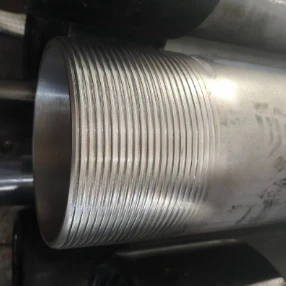- Afrikaans
- Albanian
- Amharic
- Arabic
- Armenian
- Azerbaijani
- Basque
- Belarusian
- Bengali
- Bosnian
- Bulgarian
- Catalan
- Cebuano
- Corsican
- Croatian
- Czech
- Danish
- Dutch
- English
- Esperanto
- Estonian
- Finnish
- French
- Frisian
- Galician
- Georgian
- German
- Greek
- Gujarati
- Haitian Creole
- hausa
- hawaiian
- Hebrew
- Hindi
- Miao
- Hungarian
- Icelandic
- igbo
- Indonesian
- irish
- Italian
- Japanese
- Javanese
- Kannada
- kazakh
- Khmer
- Rwandese
- Korean
- Kurdish
- Kyrgyz
- Lao
- Latin
- Latvian
- Lithuanian
- Luxembourgish
- Macedonian
- Malgashi
- Malay
- Malayalam
- Maltese
- Maori
- Marathi
- Mongolian
- Myanmar
- Nepali
- Norwegian
- Norwegian
- Occitan
- Pashto
- Persian
- Polish
- Portuguese
- Punjabi
- Romanian
- Russian
- Samoan
- Scottish Gaelic
- Serbian
- Sesotho
- Shona
- Sindhi
- Sinhala
- Slovak
- Slovenian
- Somali
- Spanish
- Sundanese
- Swahili
- Swedish
- Tagalog
- Tajik
- Tamil
- Tatar
- Telugu
- Thai
- Turkish
- Turkmen
- Ukrainian
- Urdu
- Uighur
- Uzbek
- Vietnamese
- Welsh
- Bantu
- Yiddish
- Yoruba
- Zulu
tubing and casing
Understanding Tubing and Casing in Oil and Gas Drilling
In the oil and gas industry, the terms tubing and casing refer to essential components in well construction and production processes. Both play crucial roles in ensuring the efficiency, safety, and longevity of oil and gas extraction operations. Understanding their functions, materials, and applications is key for professionals in the field and contributes to better management of resources.
What is Casing?
Casing refers to the series of pipes that are inserted into a well after drilling has been completed. The primary purpose of casing is to provide structural integrity to the wellbore, preventing it from collapsing. It also isolates different geological formations to avoid the unwanted migration of fluids between them. In essence, casing protects the wellbore from external influences, such as groundwater contamination, and serves as a conduit for oil and gas to be extracted safely.
Casing is typically made from steel, specifically alloyed steel grades designed to withstand high pressures and corrosive environments encountered deep underground. The casing process involves several stages, including running and cementing the casing in place. Cement is pumped into the space between the casing and the borehole, providing a seal that further enhances the structural integrity of the well and protects against fluid migration.
There are various casing types, including surface casing, intermediate casing, and production casing. Each type serves a specific purpose, depending on the depth of the well and the geological formations encountered. For example, surface casing is installed in the upper section of the well to protect freshwater aquifers, while production casing is set deeper to facilitate the actual extraction of hydrocarbons.
What is Tubing?
Tubing, on the other hand, refers to the smaller diameter pipe that runs inside the casing. It is the pipeline through which oil and gas are produced from the reservoir to the surface. Unlike casing, tubing is designed to transport the extracted fluids and is thus subjected to different operating conditions, including varying pressures and temperatures.
tubing and casing

The design and material of tubing are crucial to its function. Tubing is often manufactured from high-strength steel with better corrosion resistance than casing due to the exposure to production fluids, which may contain harmful substances like hydrogen sulfide and carbon dioxide. The tubing material must be able to withstand these conditions over extended periods while minimizing the risk of leaks or failures.
Tubing is a crucial component of the production system, as it directly affects the efficiency of fluid flow from the reservoir to the surface. Production tubing is typically equipped with various accessories, such as perforations, packers, and valves, which improve its functionality. For instance, packers are devices used to isolate sections of the well and control the flow of fluids, while valves regulate the flow rates and pressure within the tubing.
Casing vs. Tubing Key Differences
While both casing and tubing are vital to the well construction and production processes, they serve distinct functions. Casing provides the structural support necessary to maintain the wellbore's integrity, while tubing facilitates the extraction of hydrocarbons from beneath the Earth's surface. Additionally, the installation of casing occurs during the drilling phase, whereas tubing is installed after the well has been completed and is ready for production.
Another key difference lies in their dimensions. Casing typically has a larger diameter than tubing, as it needs to encase the entire wellbore and provide the necessary structural support. Tubing, being smaller, fits within the casing and is designed to withstand the dynamic conditions of production.
Conclusion
In summary, tubing and casing are both fundamental components in the oil and gas industry, each playing a unique role in the well construction and production processes. Casing ensures the stability and safety of the well, while tubing enables the efficient extraction of hydrocarbons. A thorough understanding of these components is essential for optimizing well performance and ensuring the safe and sustainable development of oil and gas resources. As the industry continues to evolve, advancements in materials and technologies will likely further enhance the performance of casing and tubing, leading to more efficient and safer extraction methods.
-
Tubing Pup Joints: Essential Components for Oil and Gas OperationsNewsJul.10,2025
-
Pup Joints: Essential Components for Reliable Drilling OperationsNewsJul.10,2025
-
Pipe Couplings: Connecting Your World EfficientlyNewsJul.10,2025
-
Mastering Oilfield Operations with Quality Tubing and CasingNewsJul.10,2025
-
High-Quality Casing Couplings for Every NeedNewsJul.10,2025
-
Boost Your Drilling Efficiency with Premium Crossover Tools & Seating NipplesNewsJul.10,2025







